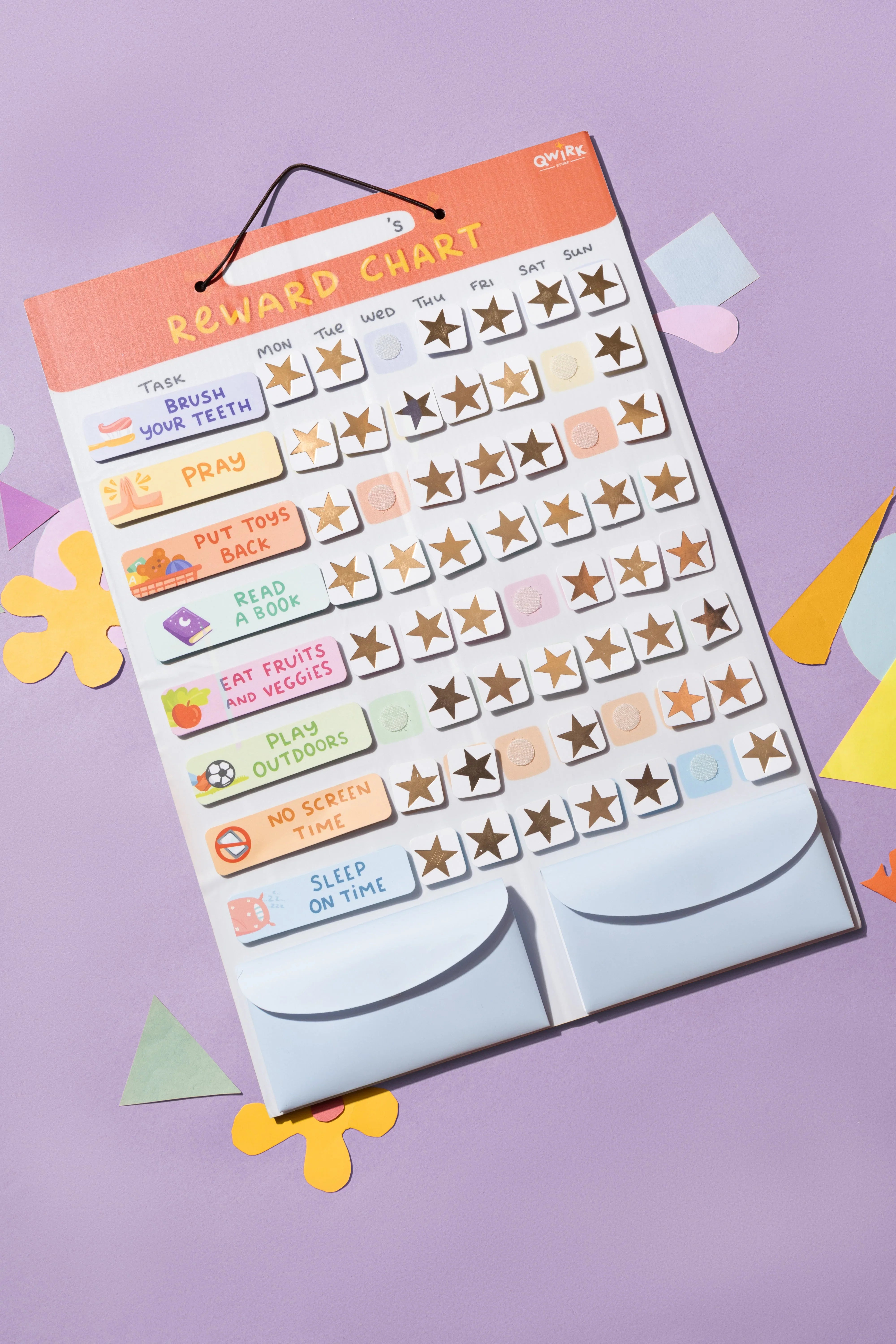The Rise of Gentle Parenting: How Reward Charts Are Reinventing Discipline
In today's fast-paced, digitally dominated world, parenting has undergone a significant transformation. Traditional forms of discipline, like scolding or time-outs, are being replaced by more nurturing and empathetic methods. At the heart of this shift lies the concept of gentle parenting, a philosophy built on respect, understanding, and positive reinforcement. One simple yet powerful tool leading this revolution? The reward chart.
What is Gentle Parenting?
Gentle parenting isn't a trend; it's a mindset. It encourages caregivers to focus on connection over correction, aiming to understand the 'why' behind a child’s behavior instead of just reacting to it. It's about guiding rather than punishing. In this approach, children aren't labeled as 'naughty' but seen as young individuals learning to navigate their emotions and decisions.
This method not only builds emotional intelligence but also fosters a deep bond of trust between parent and child. And while the idea sounds idyllic, putting it into practice requires consistent strategies—like reward charts.
Reward Charts: Tools, Not Bribes
A common misconception is that reward charts are bribes. However, when used thoughtfully, they are far from it. Unlike bribery, which is often spontaneous and reactive, a reward chart is a proactive tool. It sets clear expectations and celebrates small wins, allowing children to see the value of consistent good behavior.
Take, for example, the beautifully designed Customizable Reward Chart from Qwirk Store. With its detachable layout and colorful visuals, it's not just another chore list—it's a motivator. It aligns perfectly with gentle parenting principles by encouraging rather than coercing.
The Psychology Behind Reward Charts
Children thrive on routine and predictability. A reward chart provides both. It gives them a sense of autonomy—"I did this, and I earned that!"—which is incredibly empowering for young minds. Moreover, it visually reinforces their progress, making achievements tangible.
This method also helps in developing:
-
Self-regulation: Kids start identifying what behaviors are expected.
-
Delayed gratification: Waiting for a reward teaches patience.
-
Self-esteem: Recognition boosts confidence and pride.
Gentle Parenting in Real Life
Imagine a typical morning in a household using a reward chart. Instead of yelling because a child didn’t put away their toys, a parent might gently remind them of their star chart. “Hey, remember if you clean up, you get to add another star today.” That simple prompt transforms a confrontation into cooperation.
Over time, children begin to internalize these behaviors. They aren’t doing things just for the stars—they start understanding the why behind each task. That’s when real behavioral growth happens.
Tips for Using Reward Charts Effectively
-
Be consistent: Update the chart daily to maintain excitement.
-
Set achievable goals: Start with tasks your child can realistically complete.
-
Use meaningful rewards: These don’t have to be material. Extra story time or choosing a family movie works wonders.
-
Avoid punishment: If a goal isn’t met, use it as a learning moment.
Why the Qwirk Store Chart Stands Out
Qwirk Store’s reward chart is customizable, detachable, and visually engaging—all essential elements that keep children invested. Its playful design fits seamlessly into any room, making it a functional yet aesthetic addition to your home. Most importantly, it’s built with intention—to motivate without pressure.
In Conclusion
The era of "because I said so" is fading. In its place is a more compassionate, mindful approach to parenting—and tools like reward charts are at the forefront. If you're looking to reinforce positive behavior while nurturing your child’s emotional growth, integrating a gentle parenting strategy with a tool like Qwirk Store’s Reward Chart could be a game-changer.
Because when parenting is done gently, the results aren't just obedient kids—they're happy, emotionally intelligent, and confident individuals ready to thrive.



